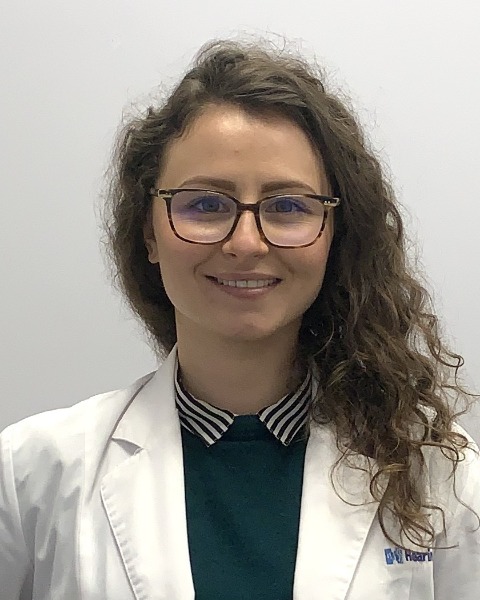Practice Management (PM)
PP1202 - Online Screener Accuracy and Follow Through for In-Clinic Testing and Treatment
- AS
Andreas SEELISCH, MS (he/him/his)
Director, Audiology
Hearing Solutions
London, Ontario, CanadaDisclosure(s): Hearing Solutions: Consultant/Advisory Board (Ongoing), Employment (Ongoing)

Kathleen D. Black, HIS, Reg. AHIP
Hearing Instrument Specialist
Hearing Solutions
Toronto, Ontario, CanadaFinancial Disclosures: I do not have any relevant financial relationships with anything to disclose.
Non-Financial Disclosures: I do not have any relevant non-financial relationships with anything to disclose.- CG
Cameron Glazier, MClSc, BSc (he/him/his)
Audiologist
Hearing SolutionsFinancial Disclosures: I do not have any relevant financial relationships with anything to disclose.
Non-Financial Disclosures: I do not have any relevant non-financial relationships with anything to disclose.
Lead Presenter(s)
Contributor(s)
Online screeners are a potentially valuable tool for reducing barriers to hearing assessment. Screeners might also be used for marketing lead generation, patient engagement and informing direct sales in the wake of over-the-counter legislation. By tracing 249 online screening samples back to patients seen in the clinic, we can estimate follow-through for in-clinic testing and hearing aid uptake. Analyzing this funnel gives valuable insight into patient motivation and lead quality. This study also compares screening results with those obtained in clinics to compare real-world findings with validation studies and better inform potential novel uses.
Summary:
Objectives: This study aims to estimate follow-through for in-clinic assessment as well as hearing aid uptake for patients who screen their hearing online. Secondary aims include comparing screening results with those obtained in-clinic.
Rationale: There are numerous reasons for delays in hearing assessment including denial, mobility, access, cost, transportation etc. In recent years, various online screeners have emerged allowing prospective patients to screen their hearing from home reducing such barriers. Screeners, however, have additional potential value when used for marketing lead generation, patient engagement or even direct sales in a marketplace where over-the-counter legislation has made this channel more viable. A better understanding of the subset of patients who follow through for in-clinic service is required to inform resource allocation and effectiveness of screeners being used as a marketing funnel. What proportion of patients passively engage in the use of this tool could inform the extent to which it can be leveraged. Comparing screening results with those obtained in-clinic for accuracy is needed to inform novel uses, such as direct sales.
Design: Demographic information was collected for 249 samples where patients completed an online hearing screening. Demographics were then matched for patients who later completed clinical testing to determine the extent of hearing loss and follow through for treatment among this population. Pure tone test results were compared with screening results to determine variance by frequency. The demographics of all prospective patients were also compared to establish trends based on home location, desire for follow up and threshold estimates.
Results: Rates of follow-through suggest a large volume of prospective patients need to be screened to generate a comparatively small volume of leads. Rates of hearing aid uptake among those that pursue clinic services do not appear inflated, limiting the return on investment from a marketing perspective. While the accuracy of screening results is sufficient to support improved resource allocation, false negative results and patients who report to clinic despite having been screened as “good hearing” suggest that it is not effective in ruling out patients who do not require a hearing aid evaluation. Results indicate low passive patient engagement suggesting an active campaign would be necessary to leverage this tool for that purpose. Results between online thresholds and conventional audiometry agree closely enough to allow for numerous conceivable uses. While results may be highly useful for some applications, error margins exceed benchmarks for test-retest reliability under more controlled environments and may limit clinical utility. Accuracy, sensitivity, and specificity were all notably worse when compared to results obtained in validation.
Conclusions: Self-administered online hearing screeners represent a valuable tool in approximating hearing sensitivity which can be used to improve clinic efficiencies. Those that employ their use for marketing purposes should expect to test a large volume of patients if the intended purpose is to generate hearing aid sales. While accuracy is likely sufficient to guide over-the-counter applications and other novel uses, clinical utility remains in question. Further investigation into demographic details is warranted to give additional insight into this market segment.
Learning Objectives:
- Analyze results obtained from online hearing screeners to improve clinic efficiency.
